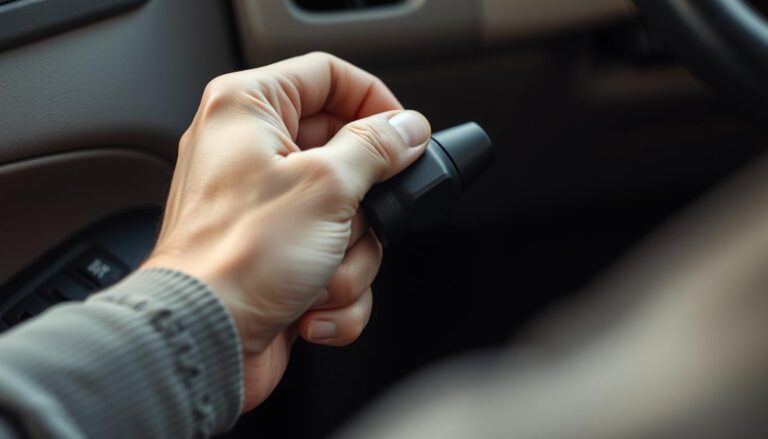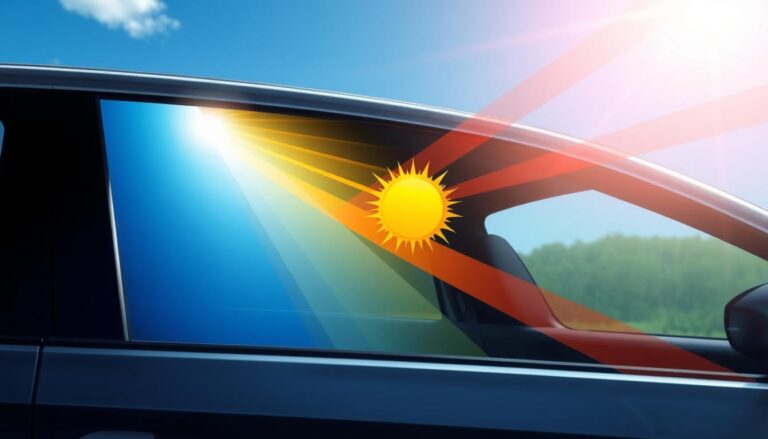Encountering unpaved roads can be challenging for many drivers. Whether you’re heading to a remote camping spot, visiting rural areas, or simply navigating a construction detour, knowing how to safely drive on gravel or dirt roads is an essential skill. These surfaces present unique challenges that require specific techniques and preparations to navigate safely.
In this comprehensive guide, we’ll explore proven strategies to help you confidently handle your vehicle on loose surfaces, prevent accidents, and respond effectively to emergency situations. From speed management to vehicle preparation, these tips will help keep you and your passengers safe when the pavement ends.
Understanding the Challenges of Unpaved Roads
Gravel roads present unique challenges including reduced traction and visibility
Before diving into specific techniques, it’s important to understand what makes gravel and dirt roads different from paved surfaces. These differences directly impact how your vehicle handles and how you should approach driving.
Reduced Traction and Control
The loose surface material on gravel and dirt roads significantly reduces the traction between your tires and the road. This decreased grip affects your ability to accelerate, brake, and steer effectively. Your vehicle may slide or skid more easily, especially when making turns or stopping quickly.
Unpredictable Surface Conditions
Unlike maintained paved roads, gravel and dirt surfaces can change dramatically based on weather, traffic volume, and maintenance schedules. A road that was firm and smooth yesterday might be soft and rutted today after a rainstorm. These unpredictable conditions require constant awareness and adaptation.
Visibility Issues
Dust is a major concern on dry gravel and dirt roads. Vehicles kick up clouds of dust that can severely limit visibility, especially when following other vehicles. Additionally, the lack of clear lane markings and sometimes narrower road width can make navigation more challenging.
Road Hazards
Unpaved roads often feature hazards not commonly found on paved surfaces, including washboard sections (rippled surfaces), loose gravel berms along shoulders, potholes, rocks, and soft spots. Each of these requires specific handling techniques to navigate safely.
Managing Speed and Following Distance

Reduce Your Speed
The single most important safety tip for driving on gravel or dirt roads is to slow down. Higher speeds dramatically increase stopping distances and reduce your ability to control the vehicle on loose surfaces. Even well-maintained gravel roads require lower speeds than comparable paved roads.
Rule of thumb: Reduce your speed by at least 10-15 mph below the speed you would drive on a similar paved road. On particularly rough or loose sections, slow down even more.
Maintain Proper Following Distance
When driving behind another vehicle on unpaved roads, standard following distances are not sufficient. Dust clouds can severely limit visibility, and stopping distances are increased on loose surfaces.
- Stay at least 6 seconds behind other vehicles (double the standard 3-second rule for paved roads)
- If dust limits visibility, increase your following distance further or pull over until it settles
- Be aware that the vehicle ahead may stop suddenly for obstacles you cannot see
- Consider using headlights even during daylight to improve your visibility to others
Approach Hills and Curves with Caution
Hills and curves on unpaved roads present additional challenges. Visibility is often limited, and the road surface may change unexpectedly. Always slow down before reaching these features, not while navigating them.
- Reduce speed before entering curves, not while in them
- Stay in your lane when approaching hills, as oncoming traffic may be in the center
- Be prepared for different surface conditions on the other side of hills
- Use a lower gear when descending steep hills to maintain control
Proper Steering and Braking Techniques
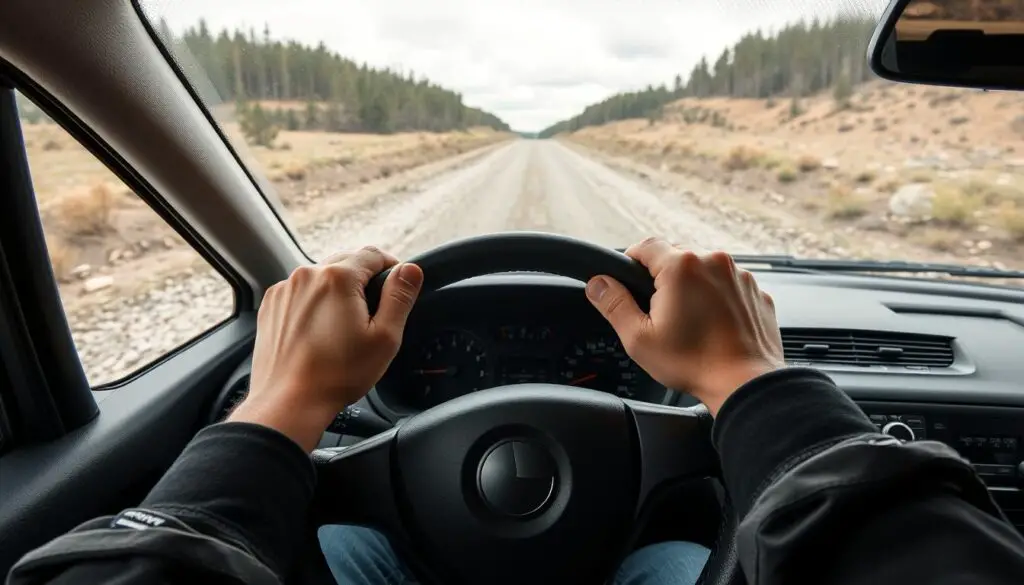
Steering Control
Proper steering technique is crucial on loose surfaces where overcorrection can lead to loss of control. The reduced traction means your vehicle may not respond to steering inputs the same way it does on pavement.
- Keep both hands on the steering wheel at the 9 and 3 o’clock positions
- Make smooth, gradual steering movements rather than sharp turns
- Avoid sudden lane changes or swerving, which can cause skidding
- If your vehicle begins to slide, steer in the direction you want to go while looking at your desired path (not at obstacles)
Effective Braking
Braking distances are significantly increased on gravel and dirt roads. Sudden or hard braking can cause your vehicle to skid or slide, potentially leading to a loss of control.
- Brake earlier and more gradually than you would on paved roads
- Apply steady, even pressure to the brake pedal
- If your vehicle has ABS (Anti-lock Braking System), press firmly and hold the brake pedal down if you need to stop quickly
- For vehicles without ABS, use threshold braking—apply firm pressure just short of locking the wheels
“On gravel, the major difference is much less grip. This means safe cornering speeds are reduced, and braking distances are increased. Drive smoothly and avoid sudden inputs from the steering wheel or pedals.”
Handling Skids
Even with careful driving, skids can occur on loose surfaces. Knowing how to respond can prevent a minor skid from becoming a serious accident.
- Stay calm and avoid panicking
- Take your foot off both the accelerator and brake pedals
- Look where you want the vehicle to go, not at obstacles
- Steer gently in the direction you want to travel
- Once control is regained, gradually resume driving at a reduced speed
Vehicle Preparation for Unpaved Roads
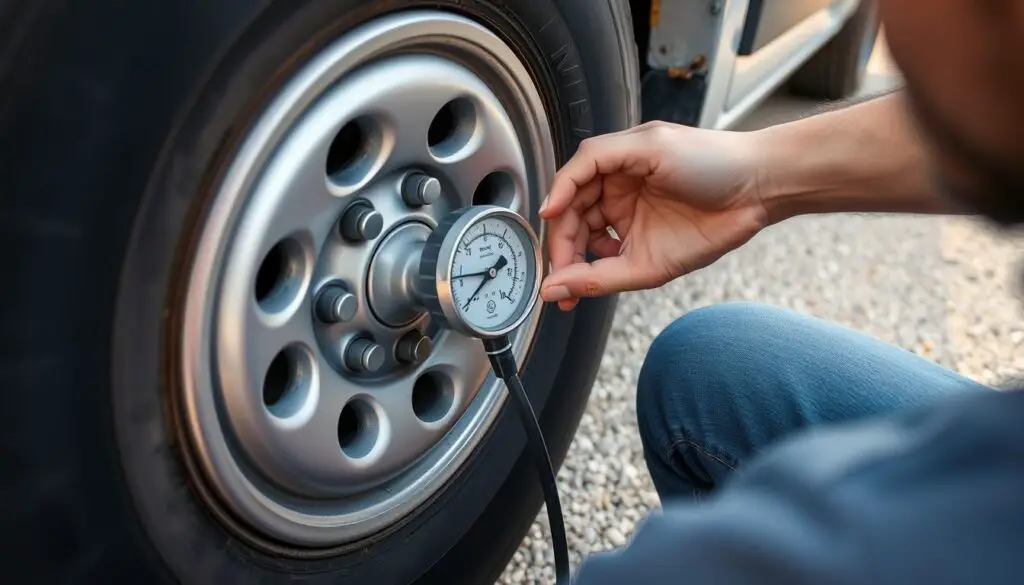
Properly preparing your vehicle before traveling on unpaved roads can significantly improve safety and reduce the risk of damage. These maintenance checks are especially important if you’ll be driving on gravel or dirt roads for extended periods.
Tire Considerations
Your tires are the only point of contact between your vehicle and the road surface, making them critical for safe travel on unpaved roads.
- Ensure tires are properly inflated according to manufacturer recommendations
- Consider slightly reducing tire pressure (by 3-5 psi) for improved traction on loose surfaces, but never go below the minimum recommended pressure
- Check for adequate tread depth to maintain grip on loose surfaces
- Inspect tires for damage before and after driving on rough roads
- Always carry a properly inflated spare tire and know how to change it
Suspension and Undercarriage
Rough roads can take a toll on your vehicle’s suspension components and undercarriage. Regular inspection and maintenance help prevent breakdowns in remote areas.
- Check shock absorbers and struts for leaks or damage
- Inspect for loose bolts or mounting points that could fail under stress
- Consider installing skid plates if you frequently travel on rough roads
- Ensure adequate ground clearance for the roads you’ll be traveling
Visibility Systems
Maintaining good visibility is essential on unpaved roads where dust, debris, and changing light conditions can affect your ability to see clearly.
- Ensure windshield wipers are in good condition
- Keep washer fluid reservoir filled with high-quality fluid
- Clean headlights and taillights before traveling
- Consider installing auxiliary driving lights if you frequently travel on remote roads
Advanced Driving Techniques for Specific Conditions
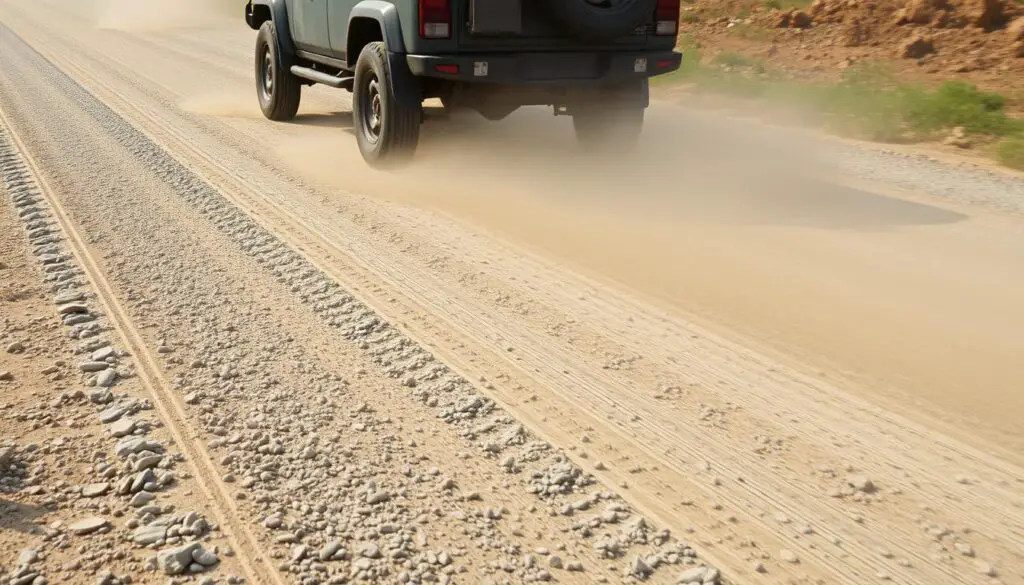
Navigating Washboard Surfaces
Washboard or corrugated surfaces are rippled patterns that develop on gravel roads. They can cause your vehicle to bounce and potentially lose traction if approached incorrectly.
What to Do:
- Slow down significantly before reaching washboard sections
- Try to find the smoothest line through the section
- Maintain a steady speed once you’ve found the right rhythm
- Keep a firm but relaxed grip on the steering wheel
What to Avoid:
- Excessive speed that causes vehicle bouncing
- Sudden braking or acceleration on washboard sections
- Tense grip on the steering wheel that transfers vibrations to your arms
- Overloaded vehicles that compress suspension
Handling Loose Gravel and Berms
Loose gravel, especially along the shoulders of the road, can cause your vehicle to slide unexpectedly if a tire catches in it. Road graders often create berms (ridges of loose gravel) along the edges of gravel roads.
- Drive in the tire tracks of previous vehicles when possible
- Avoid driving too close to the edge of the road where loose gravel accumulates
- If your wheel catches in a gravel berm, don’t jerk the steering wheel
- Instead, gradually slow down and gently steer back toward the center of the road
Driving in Wet Conditions
Rain transforms dirt and gravel roads, creating mud that significantly reduces traction. Wet conditions require additional caution and specific techniques.

- Reduce speed even further than on dry gravel roads
- Avoid sudden acceleration that can cause wheels to spin
- Drive in higher gears to reduce torque to the wheels
- Follow existing tire tracks where the surface may be more compacted
- Be aware that mud can hide deep potholes or obstacles
- Consider turning around if conditions deteriorate significantly
Handling Emergency Situations
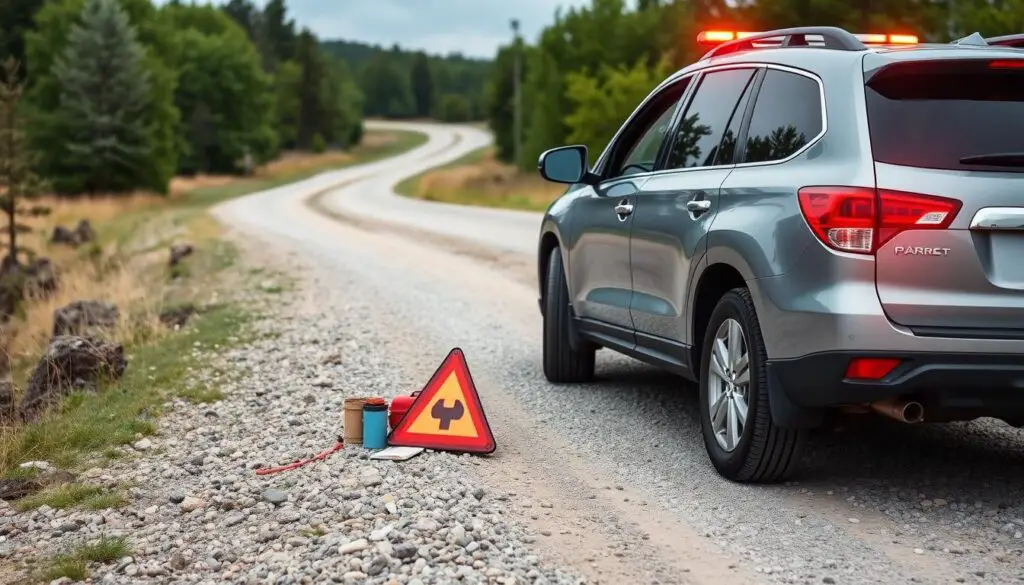
Even with proper preparation and driving techniques, emergency situations can arise on unpaved roads. Knowing how to respond can prevent minor incidents from becoming serious emergencies.
If You Begin to Slide or Lose Control
- Remain calm and avoid overreacting
- Look where you want the vehicle to go, not at obstacles
- Take your foot off both the accelerator and brake
- Steer gently in the direction you want to go
- Once control is regained, continue at a reduced speed
If You Get Stuck
Soft spots, mud, or deep gravel can cause vehicles to become stuck, especially after rain or in areas with poor drainage.
- Avoid spinning your wheels, which will only dig you deeper
- Straighten the steering wheel and try gentle forward and backward rocking
- Place traction aids (floor mats, branches, gravel) under drive wheels
- Slightly reduce tire pressure to increase the contact patch (remember to reinflate once free)
- If traveling with others, have passengers safely guide you or help push
Essential Emergency Supplies
When traveling on remote unpaved roads, carrying emergency supplies can make the difference between a minor inconvenience and a dangerous situation.
Vehicle Recovery
- Portable shovel
- Traction boards or mats
- Tow strap
- Tire repair kit
- Portable air compressor
Safety Equipment
- First aid kit
- Warning triangles
- Flashlight with extra batteries
- High-visibility vest
- Fire extinguisher
Personal Supplies
- Water and non-perishable food
- Blanket or warm clothing
- Fully charged mobile phone
- Paper map (don’t rely solely on GPS)
- Weather-appropriate gear
Vehicle-Specific Considerations

Different types of vehicles handle unpaved roads differently. Understanding your vehicle’s capabilities and limitations is essential for safe travel on gravel and dirt roads.
Two-Wheel Drive Vehicles
Most passenger cars and many SUVs are two-wheel drive (either front-wheel or rear-wheel drive). While these vehicles can navigate well-maintained gravel roads, they have limitations on more challenging surfaces.
- Front-wheel drive vehicles generally handle better on gravel than rear-wheel drive
- Avoid deep ruts, soft spots, and steep inclines when possible
- Carry additional recovery equipment if traveling to remote areas
- Be especially cautious in wet conditions where traction is further reduced
All-Wheel Drive and Four-Wheel Drive
Vehicles with all-wheel drive (AWD) or four-wheel drive (4WD) systems provide additional traction on loose surfaces, making them better suited for unpaved roads.
- Engage 4WD High when driving on gravel or dirt roads for improved control
- Remember that AWD/4WD helps with traction but doesn’t improve braking distance
- Don’t let AWD/4WD capability lead to overconfidence—reduced speeds are still necessary
- Learn how to properly use your vehicle’s specific 4WD system before traveling on difficult roads
High-Clearance Vehicles
Vehicles with higher ground clearance (many SUVs, trucks, and purpose-built off-road vehicles) can navigate rougher roads with less risk of undercarriage damage.
- Higher clearance allows for navigation of deeper ruts and obstacles
- Still maintain appropriate speeds—high clearance doesn’t prevent rollovers
- Be aware that higher vehicles may have a higher center of gravity, increasing rollover risk
- Learn the specific approach, departure, and breakover angles of your vehicle
Sharing Unpaved Roads Safely

Unpaved roads often lack clear lane markings and may be narrower than paved roads. This requires additional courtesy and awareness when sharing the road with other vehicles.
Meeting Oncoming Traffic
When meeting vehicles traveling in the opposite direction on narrow gravel or dirt roads, both drivers need to adjust their position and speed.
- Slow down significantly when approaching oncoming vehicles
- Move to the right side of the road, leaving as much space as possible
- Be prepared to stop if the road is too narrow for safe passing
- Use headlights even during daylight to improve visibility
- Wave or acknowledge other drivers—this courtesy is common on rural roads
Overtaking Other Vehicles
Passing on unpaved roads requires extra caution due to reduced traction, potential dust clouds, and often limited visibility.
Warning: Only attempt to pass when you have clear visibility for a safe distance ahead and are certain you can complete the maneuver safely. If in doubt, remain behind the vehicle ahead at a safe distance.
- Maintain a safe following distance until ready to pass
- Signal your intention to pass, even on remote roads
- Ensure you have ample clear road ahead to complete the pass safely
- Pass smoothly without excessive speed
- Allow extra space when returning to your lane
Encountering Special Vehicles
On rural unpaved roads, you may encounter farm equipment, maintenance vehicles, or recreational vehicles that require special consideration.
- Give wide berth to farm equipment, which may be wider than it appears
- Be patient with road maintenance vehicles working to improve the road
- Watch for ATVs, dirt bikes, or other recreational vehicles that may appear suddenly
- Be especially cautious near rural homes where children or pets may be present
Conclusion: Staying Safe on Any Road Surface

Driving on gravel or dirt roads doesn’t have to be intimidating. By understanding the unique challenges these surfaces present and applying the appropriate techniques, you can navigate unpaved roads safely and confidently.
Remember that the key principles—reducing speed, increasing following distance, using smooth steering and braking inputs, preparing your vehicle properly, and carrying emergency supplies—will help ensure your safety on any unpaved surface you encounter.
With practice and awareness, you’ll develop the skills needed to handle these roads with confidence, allowing you to safely access the many beautiful and remote destinations that lie beyond the pavement.
“The journey on unpaved roads may be bumpy, but with the right preparation and techniques, it can lead to the most rewarding destinations.”
Frequently Asked Questions About Driving on Unpaved Roads
What is the most important safety tip for driving on gravel roads?
The single most important safety tip is to reduce your speed. Driving too fast on gravel or dirt roads significantly increases stopping distances, reduces vehicle control, and raises the risk of skidding or sliding. A good rule of thumb is to drive at least 10-15 mph slower than you would on a comparable paved road.
How should I handle a skid on a gravel road?
If your vehicle begins to skid on gravel:
- Stay calm and avoid sudden movements
- Take your foot off both the accelerator and brake pedals
- Look where you want the vehicle to go (not at obstacles)
- Steer gently in the direction you want to travel
- Once control is regained, continue at a reduced speed
Avoid overcorrecting, which can lead to a more severe loss of control.
Should I adjust my tire pressure for driving on gravel roads?
For occasional gravel road driving, maintaining your manufacturer’s recommended tire pressure is usually sufficient. For extended driving on rough gravel or dirt roads, slightly reducing tire pressure (by 3-5 psi) can improve traction and ride comfort by increasing the tire’s contact patch with the road.
However, never reduce pressure below the manufacturer’s minimum recommendation, and always reinflate tires to normal pressure when returning to paved roads.
What should I do if I get stuck on a dirt road?
If your vehicle becomes stuck:
- Avoid spinning your wheels, which will dig you deeper
- Straighten the wheels and try gentle rocking (forward and reverse)
- Place traction aids under drive wheels (floor mats, branches, gravel)
- Slightly reduce tire pressure to increase the contact patch
- If available, use recovery equipment like traction boards
- If traveling with others, have them safely guide or help push
If these methods don’t work, call for assistance rather than risking damage to your vehicle.
Is four-wheel drive necessary for gravel roads?
Four-wheel drive is not absolutely necessary for well-maintained gravel roads in dry conditions. Most two-wheel drive vehicles can safely navigate these roads when driven appropriately. However, four-wheel drive or all-wheel drive provides additional traction and control, making it beneficial for:
- Wet or muddy conditions
- Poorly maintained roads with deep ruts or loose sections
- Steep inclines or declines
- Remote areas where recovery assistance may be limited
Remember that even with 4WD, appropriate speed and driving techniques are still essential for safety.

